Features of cuttings dahlia
If you hold a beauty contest among flowers, then the dahlia will confidently win the title of first vice-miss of the garden, conceding, perhaps, only to the permanent queen of the rose. A variety of bizarre forms of dahlias, their luxurious palette of shades, abundant and long flowering - these are just a tiny part of the advantages of the famous plant. And the desire of any gardener to plant the best varieties of amazing flowers in their flower beds is understandable. But it is not enough to get rare and fashionable types of dahlias: you still need to breed successful finds, having mastered the methods of their reproduction for this. This time we will talk about which method of division to choose, how to successfully cope with the task, taking into account all the subtleties of working with a plant.
Content:
- General information about the plant and its varieties
- Advantages and disadvantages of the dahlia cuttings method
- Preparing for grafting
- Process technology
- Features of care for cuttings
General information about the plant
This flower culture is usually called dahlia or dahlia... While all over the world the plant is known as dahlia. Dahlias can be safely ranked among the capricious flowers that require constant care and attention. Their main enemy is early frosts, typical for the Russian climate. After all, the homeland of the thermophilic plant is Mexico.
Appearing in Europe in the eighteenth century, dahlia made a splash. Only the best gardens of the first persons of the states could boast of collections of exquisite flowers. This is understandable: the prices for them were exorbitant. Experiencing a boom in popularity, the tubers of plants came to Russia, where they received the local name "dahlia" and were initially mistaken for a vegetable.
Dahlias still inspire breeders to create unusual varieties.
To date, about 15,000 are known varieties of flowers... I had to introduce a classification in order to structure the already registered varieties. She divides dahlias into 12 main groups according to their appearance.
Dahlias look spectacular: large flower heads are often ball-shaped, petals can be either monochromatic or variegated. Some varieties of flowers retain excellent durability after cutting, others look harmonious on the bushes. The stems of some plant species reach a length of 2.5 meters. There are also miniature options when dahlias do not grow more than 30 centimeters.
It is curious that the varieties with the tallest stems and large flower heads bloom later and have fewer inflorescences on the bush, although they have a longer life span.
It is worth initially deciding on the criteria for choosing varieties. So, for low and small species, the maximum possible number of flowers is characteristic at the same time, but they will also fade faster. On average, the duration of flowering of one open bud is one and a half weeks. During the season, the dahlia bush can give up to 60 flowers.
Dahlias are large and miniature border, potted, cut ... Undoubtedly, dahlia is beyond competition in terms of the variety of species.
So, the first step in breeding dahlias is a careful selection of suitable plant varieties, taking into account the preferences of the owners in terms of appearance, purpose and peculiarities of flower growth.
Advantages and disadvantages of the dahlia cuttings method
You can breed dahlias by dividing tubers and cuttings.
Consider the main benefits of cuttings:
- Cheapness and time saving. With the help of cuttings, you can get a sufficient number of independent plants already in one year. Up to 50 new cuttings are formed on the root tuber.
- Possibility of early detection of diseases and injuries. On the leaves of the cutting, the problems of the plant are immediately visible, be it diseases or other shortcomings of the planting material. At the same time, waiting for the emergence of a tuber sprout delays the diagnosis of plant quality.
- Accelerated flowering of cut flowers. Adapted in a greenhouse or at home, sprouted cuttings become leafy and bloom faster.
- High immunity of cuttings. They are stronger, and, therefore, better resist diseases and pests compared to plants that have been planted with tubers. So, bulbs affected by a fungus due to high soil moisture or damaged by pests begin to rot, which leads to the death of germinated plants. Cuttings have no tuber and therefore no risk of infection.
- The quality of the flowers for selection. Cutting allows preserve valuable varietiesconstantly updating the planting material.
- Plants from cuttings are superior in flowering and overall developmental strength, are more decorative and retain the main characteristics and purity of the variety.
Despite the long list of advantages, there are disadvantages of the method. These include:
- Deformation of tubers due to the peculiarities of germination. Cuttings are hatched in containers of limited size and already grown shoots are planted in open ground. This leads to bending and interlacing of the root system of the nests.
- The survival rate of the cuttings. A damaged seedling will inevitably die, while several buds may appear on the stem of a plant sprouting from a tuber.
- Tuber size. It loses out in comparison with the material obtained from the divisions. The cut dahlia is inferior in terms of the number of tubers that have appeared.
- The complexity of the method. Undoubtedly, the method of cuttings requires more effort and time. But sometimes it turns out to be the only possible option for obtaining new specimens of a valuable variety.
Having weighed all the pros and cons of this type of dilution, it can be argued that its use is effective and justified.
For its successful implementation, it is only necessary to study the basics of cuttings and to consolidate the skill in practice.
Preparing for grafting
Every serious gardener breeding dahlias, will offer his own method of cuttings. Nevertheless, there are general rules of technology, an important stage of which is preparatory work. Here's a list of the steps to take:
- Prepare clean containers, mini greenhouses and tools. Equipment can be disinfected either by soaking in special solutions or by sterilization.
- Prepare the soil. This is done with biologics and heat treatments. Disinfection is carried out by calcining the substrate in an oven or microwave oven. The steaming method is also suitable. Of the drugs, for example, Gamair is suitable. One tablet of the product is dissolved in water and diluted by adding 10 liters of liquid. It is important to choose a suitable soil composition.
- Select quality tubers. To accelerate the ripening process of the buds, it is recommended to spray the tubers with Epin's solution and put them under phytolamps or in natural light. To disinfect the planting material, a fungicide is used, diluted at the rate of 3 ml of active substance per 2 liters of water. After this procedure, the tubers are thoroughly dried.
- In the process of buying tubers, choose clean bulbs. They should be free of traces of mold and rot and no sprouts on the root.
Obviously, the quality and quantity of young plants obtained as a result depends on the correct preparation.
Process technology
The subsequent stages of grafting may vary.
Let's take the most popular way for example:
- The mothers are planted in pots 10-15 cm in size.
- It is necessary to ensure that after planting the tuber neck remains above the ground level.
- For individual disembarkation cuttings still use special devices "Jiffy".
- When soaked in hot water, the tablets filled with the substrate swell and a dahlia stalk is placed in them.
Bulbs can be placed horizontally for germination in a common container.
- However, with this method, it is necessary to prevent possible entanglement of the root system of neighboring tubers and take care of uniform watering of the plants.
- It is necessary to use phytolamps. Optimum temperature conditions: +20 degrees Celsius. The ideal option is to provide underfloor heating.
- The sprouts germinate after three weeks. When they reach 7 cm, the cuttings are ready to be separated from the mother liquor. You can gently break off the process, or cut it off with a knife at the base. Two shoots usually grow from one place.
- The shoots are treated with a root stimulant. For example, succinic acid.
- Cuttings are planted in small containers. Only the tip of the sprout should remain on the surface.
- Additional heating is provided for the cuttings in the form of a mini-greenhouse.
- High-quality illumination of newly planted dahlias is provided.
Greenhouses periodically need aeration and inspection for the appearance of the first roots. They grow in cuttings after 10 days.
- After two weeks, the film is removed from the cuttings greenhouses and the adaptation of plants to indoor conditions.
- Watering dahlias at this stage is necessary with plain water.
- After the cuttings begin to actively grow, you should start the mineral bait of the plants.
- At this stage, it is possible to transplant the matured cuttings into more spacious containers.
- Dahlias can be planted in the garden after the frost ends. It is necessary to do this until no more than three pairs of leaves appear on the young stem.
Thus, subject to the technology of growing cuttings, dahlias can start flowering at the end of June.
Features of care for cuttings
The process of breeding dahlias with cuttings has its own characteristics:
- You cannot plant the whole dahlia tuber - it must be divided into parts. This prevents the degeneration of the variety and increases the decorative effect of the plant.
- It is possible to repeat the cuttings procedure in one season, provided that the first one is carried out in winter.
- Overfed cuttings lay root tubers worse.
- When planting uterine tubers, it is imperative to mark the containers so that there is no confusion between varieties.
- The stems and leaves of the planted shoots must always be dry. Condensation caused by greenhouse conditions is harmful to the shoots.
Particularly rare and valuable varietal bushes are not completely planted in the soil. They are added dropwise directly in the pot, prolonging the growing season as much as possible, and then put away for storage.
It is better to carry out cuttings of flowers in the evening. The sun's rays adversely affect the process of separation of the processes.
Cut off and plant the shoots gradually, trying to immediately plant them in the soil. This way you can avoid wilting of the cutting. Another way to protect cut shoots is to cover them with some kind of material.
It is impossible to warn newbies against all mistakes. Only with practice will the correct algorithm of actions and the creation of optimal conditions for cuttings be developed.
As you can see, plant cuttings are a method that requires time and some effort. But this is the only quick and reliable way to breed your favorite variety. For true fans of dahlias grafting turns into a fun process of caring for your favorite flowers.
More information on breeding dahlias can be found in the video.



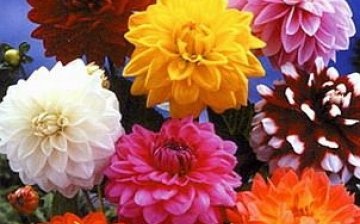
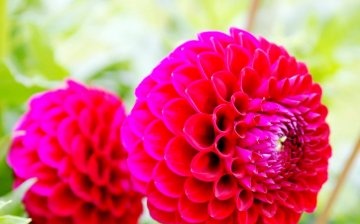

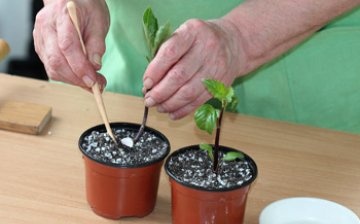
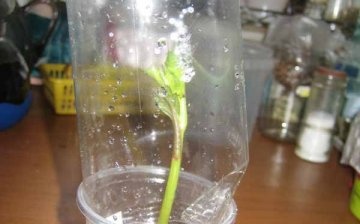
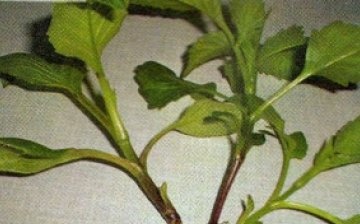






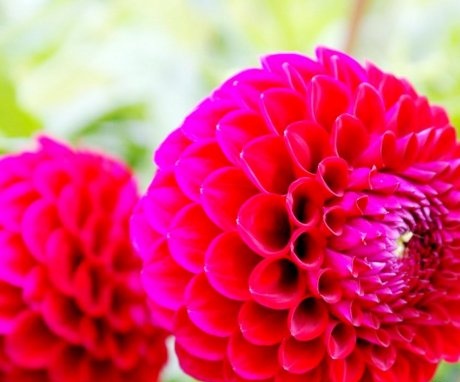
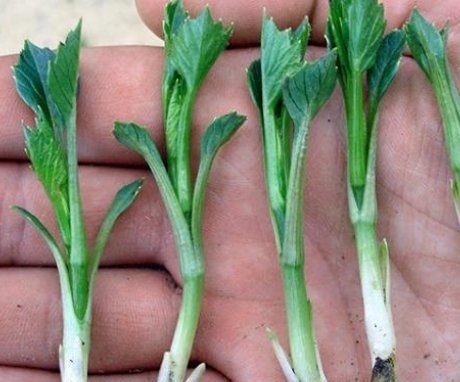
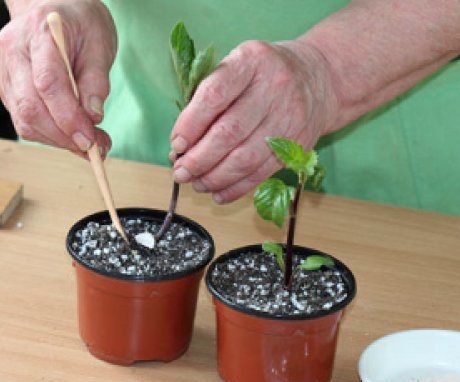

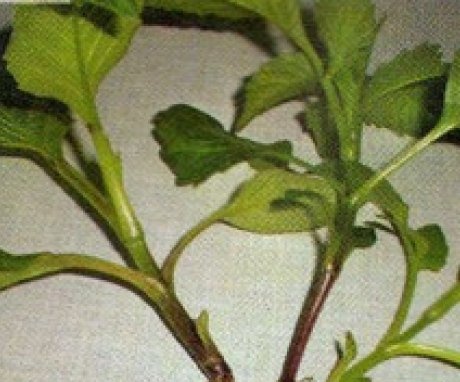
I really, really like dahlias.But I never manage to preserve their roots in winter - they always dry out to dust, even if kept in a cool place. I do not know what to do.